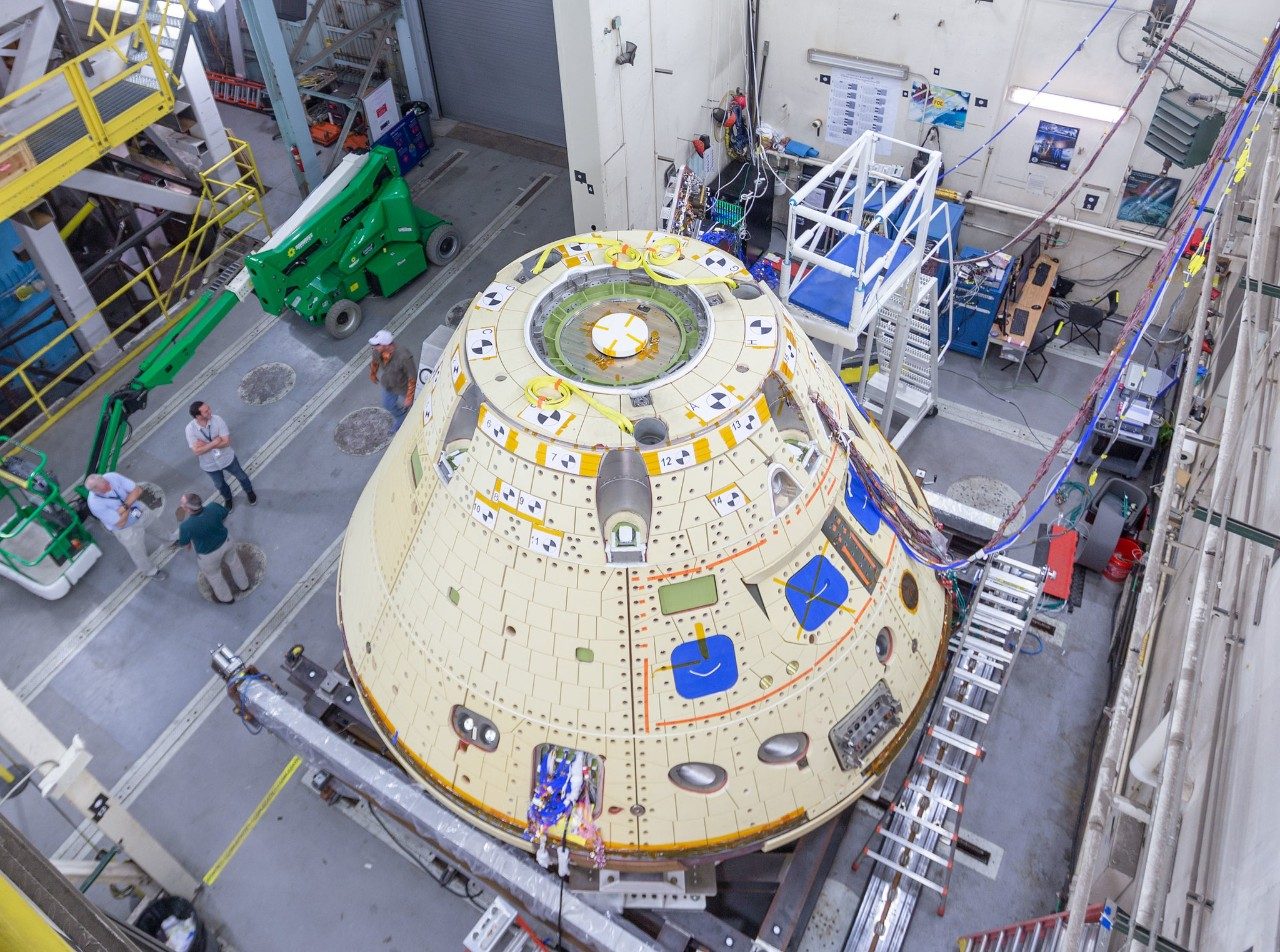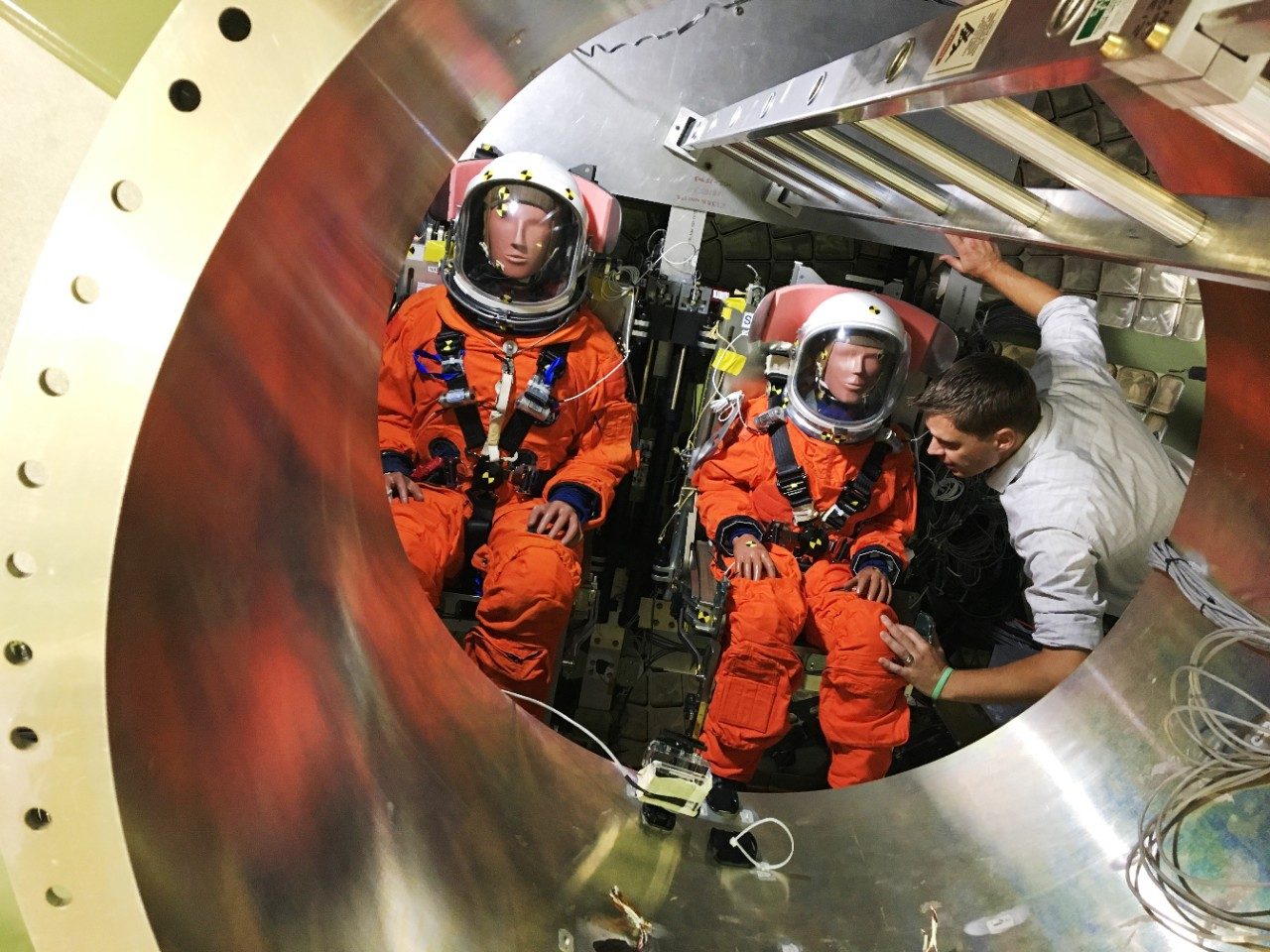Editor's Note: On July 2, 2019, at 7 a.m. ET, NASA successfully completed Ascent Abort-2 (AA-2) testing the Orion Launch Abort System. Days before the test, we spoke with Mark Baldwin, astronaut safety engineer, about the test itself and his work on the program.
In early July, NASA will test the Orion’s launch abort system (LAS) for the final time, and the team charged with keeping the crew safe from injury during the most severe phases of space flight will be watching and analyzing the results.
The Ascent Abort Test 2 (AA-2) will verify that the LAS, a rocket-powered tower above the crew module, can accelerate the capsule away from the launch vehicle and to a safe distance if something goes wrong during the rocket’s ascent phase.
“AA-2 will allow us to focus on what we understand about the environments the crew experience during an ascent abort and what we can do to ensure their safety,” said Mark Baldwin, a biomechanical engineer and Lockheed Martin Space’s Orion crew safety and landing analyst. Baldwin works with Lockheed Martin and NASA engineering teams to determine the injury risks that crew members face during the most severe phases of flight to the Gateway and then helps design systems to protect them, from seats to suits.
What Happens During AA-2
The AA-2 test will last less than three minutes, but the mock-up module will reach up to 31,000 feet at more than 1,000 mph (Mach 1.3) before the LAS fires and separates the module from the booster. “What it comes down to is a pretty intense several seconds of their life, but one that will ensure the astronauts live and will not be injured in the process,” Baldwin said.
The test follows a pad abort test (PA-1) conducted in 2010 that used a prototype escape system fired from the ground, or while on the launch pad.
“We have to assess both injury potential on the launch pad and on ascent, so AA-2 is going to fill in that second blank on what happens when you are already traveling at high speeds, cutting through the wind, and now you’re atop a rocket and you’re pulling away,” Baldwin said. “That imparts a different set of loads that could potentially injure the crew that we need to assess.”
In a launch emergency triggering the LAS, the crew would experience G forces during acceleration equivalent to a rear-end car crash as well as strong vibrations and noise from the firing of the LAS’ bolts and its thrusters. “We need to ensure that the acceleration and all of that vibration put together is not above the limits that NASA has set,” Baldwin said.
The test module will not carry seats or crash-test dummies, but the data gathered will be measured against structural, seat and human models that the structural analysis teams have created.
Testing Orion

Baldwin and his colleagues already know a lot about what could happen to the crew during an ascent abort, thanks to years of testing in three main areas: acceleration, vibration and localized injury. For example, using an acceleration sled, they have slammed crash-test dummies in impact tests experiencing 14 Gs; accelerations beyond worst-case landing and abort levels. Baldwin himself has participated as a test subject. In 2017, he donned the Orion astronaut suit and helmet and spent seven hours strapped into the module’s seat for a vibration test designed to see whether the astronauts could read the control displays.
The data has helped create the safety system that NASA requested for the challenges of a deep-space mission—one that is twice as protective as the safety standard for an automobile in a rear-end crash.
“We are confident that the astronauts will be protected,” he said. “We have accommodated all of the limits NASA requires for a spacecraft to demonstrate it’s safe, but spaceflight is inherently dangerous and risky. We need tests like AA-2 to ensure we haven’t missed something and build that confidence going into the first crewed mission.”

Mark Baldwin is an astronaut safety expert and Lockheed Martin engineer working on the NASA Orion program. We asked him about what it’s like designing systems to protect humans in space.
There’s a long history of human impact studies, not necessarily just space, but just in general. How does that serve as a baseline for you?
BALDWIN: Going all the way back to the '50s, there were heroic people that put themselves in grave danger to establish what we now understand are the limits of loading on the body. And this goes from rocket sled tests to, believe it or not, graduate students being strapped to sleds. I wouldn't join that program. They established what we now understand as the acceptable limits for acceleration and then local injuries. And those are the things that we're leveraging on Orion to make sure we keep our crew safe.
During an Orion mission, what are the major events that you're most concerned about? These missions can be upwards of 21 days or longer.
BALDWIN: They can. Believe it or not, I ignore almost all of the mission. I am most interested in really a few seconds at the very beginning and very end. So, you could start with a pad abort. You could never get off the pad, in which case you would see the full acceleration of the abort thrust to pull you to safety. At the very end of the mission, you're going to always hit the water. You're going to have to make sure you understand how severe that's going to be. And in the case of Orion, we're trying to do deep space missions. You're going to have deconditioning that's going to weaken the body, and you could be more susceptible than anybody just driving a car to injury. We have to really understand both the front and the back end of the entire mission.
The Orion AA-2 test is coming up. Tell us a little bit about it.
BALDWIN: The upcoming test, Ascent Abort 2, is the same type of test, but now you're already going a lot faster and you're at about 30,000 feet. The whole test is going to be over in a minute. But we're going to go through that sequence of firing the abort thrusters, which will impart the G's at the seat, pull yourself away from the rocket, and then re-orient and escape from the launch abort system.
For the full interview, including the story of an Air Force doctor and colonel who subjected himself to extreme tests, subscribe to The Gateway to Space newsletter.




